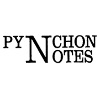Abstract
In A History of Reading, Alberto Manguel draws our attention to an (apparently) obvious fact: "Books declare themselves through their titles, their authors, their places in a catalogue or on a bookshelf, the illustrations on their jackets." He announces with gusto, "I judge a book by its cover; I judge a book by its shape" (125). Indeed, the cover of Blissful Bewilderment is intriguing and elicits an immediate flash of recognition from a reader of Pynchon. A warm, deep-sepia background identifiable as a segment of an old map of North America sets off a cold, bluish-gray iris, part of which is a clock face. The clockwork eye subtly emphasizes the connection between the book, whose editors and nearly all its contributors are Scandinavians, and a Scandinavian motif in Pynchon's oeuvre. After all, the last trace of V.'s clockwork artificial eye leads Stencil to Stockholm. On the other hand, the cover image of the eye may well be seen as the reader's guide to the tenor of the essays collected in Blissful Bewilderment.
How to Cite:
Kolbuszewska, Z., (2002) “An Elated Eye: Scandinavian Perspectives”, Pynchon Notes , 136-153. doi: https://doi.org/10.16995/pn.78
Downloads:
Download PDF

